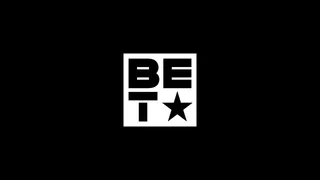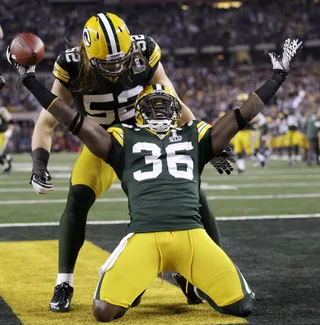Facts: NFL Lockout
More on the disagreement between NFL players and owners.

1 / 10
NFL Lockout - After months of negotiations between NFL owners and players over a new collective bargaining agreement that would lower players’ salaries and increase the number of games in a season, owners and players met in court Wednesday over whether the owners’ decision to lock out players was legal. Lawyers for the players asked a judge to grant a preliminary injunction that would lift a lockout imposed by owners three weeks ago after negotiations for a new collective bargaining agreement broke off. Star players Tom Brady, Peyton Manning and Drew Brees are among the suit’s plaintiffs. If the players and owners don’t reach an agreement, and if the courts aren’t able to intervene, the NFL season, due to start Sept. 8, won’t happen at all. Find out the issues behind the disagreement as well as the effects on the players, fans and future of the league in the following pages. In...

2 / 10
History - Back in 1993, after four contentious years of negotiations and lawsuits (including one brought by late defensive end Reggie White, pictured) pitting players against owners, the two sides reached a compromise that formed their original collective bargaining agreement. At the time, the CBA was seen as beneficial for everyone—veteran players were now allowed to become free agents and all of the players agreed to a salary cap. With the compromise, both sides also agreed that the players’ combined salaries would be no more than 64 percent of the NFL’s revenues. (Photo: REUTERS/Mike Blake/FILE /Landov)

3 / 10
The Disagreements - Under the expired agreement, players received 60 percent of the NFL’s $9 billion revenue. But with rising expenses—including the cost of building new stadiums and a struggling economy—NFL owners say that their current revenue isn’t enough to keep up with the costs and that players’ salaries (the average player makes about $1.9 million a year) are becoming more and more unreasonable. So now, owners are asking for $2.4 billion out of the pool of $9 billion, which effectively cuts the players’ share by 18 percent. Last year, the league saw the average pro team value dip for the first time in more than a decade from $1.04 billion to $1.02 billion, with only the league’s most financially valuable Dallas Cowboys—worth $1.8 billion—seeing an increase over the previous year. On the other side, players would like to prevent a salary cut and also aren’t too pleased with...

4 / 10
Trouble Brewing - Although negotiations hit an impasse in March, talk of a lockout—in which players are literally locked out from team facilities and are prohibited from participating in official team events—as well as disputes over the CBA, which expired March 11, has been going on for years. In 2007, the league’s owners began adding lockout clauses to the contracts of coaches and executives. The stipulations allowed for them to slash their salaries 50 percent and suspend contracts on 20 days’ notice if the league was locked out. In May 2008, owners decided unanimously to move up the expiration date of the collective bargaining agreement to March 2011. DeMaurice leaves negotiations earlier last month. (Photo: AP Photo/Alex Brandon)

5 / 10
Locked Out - After the CBA expired last month, the NFL Players Association decertified itself (meaning the union no longer represents the players), allowing players to file individual antitrust lawsuits against the league. The suits challenged the NFL’s draft, salary cap and free-agent policies. (Photo: Al Bello/Getty Images)
ADVERTISEMENT

6 / 10
Goodell’s Letter to Players - Almost a week after the lockout, league commissioner Roger Goodell issued a letter to them outlining the league’s proposal and opening the door to further negotiations. “Each passing day puts our game and our shared economics further at risk. We believe the offer presented a strong and fair basis for continuing negotiations, allowing the new league year and free agency to begin, and growing our game in the years to come,” he wrote. The players association fired back a response, essentially claiming that Goodell lied in his letter about his efforts to make proposals that will be fair to both sides. (Photo: AP Photo/J. Scott Applewhite)

7 / 10
What Does It All Mean? - For the players, the lockout means that the facilities are closed to them and that free agency has been suspended. Unless they have a clause in their individual contracts, players won’t be paid during the off-season. Minicamps, conditioning programs or any other team-mandated activities will not take place. Player merchandise, including jerseys and other items, will still be available to fans, thanks to long-standing agreements between the league, the now-defunct NFLPA and their licensees. (Photo: AP Photo/Paul Sancya)
Photo By AP Photo/Paul Sancya

8 / 10
Draft - The NFL draft will still take place as scheduled April 28-30. However, picks won’t be allowed to sign any contracts until the end of the lockout. Heisman trophy winner Cam Newton, a top draft prospect, is pictured here at a scouting combine before the lockout. (Photo: AP Photo/Michael Conroy)

9 / 10
Keeping Busy - Since the lockout, players such as Cincinnati’s Chad Ochocinco, have been keeping busy. Last month, the receiver won a spot on the reserve team for Sporting Kansas City, a Major League Soccer team. Ravens safety Tom Zbikowski has taken up boxing, appearing on Atlantic City fight cards and free agent Donovan McNabb has been recently doing in-studio analysis for NCAA basketball tournament games for Comcast. (Photo: AP Photo/Charlie Riedel)
